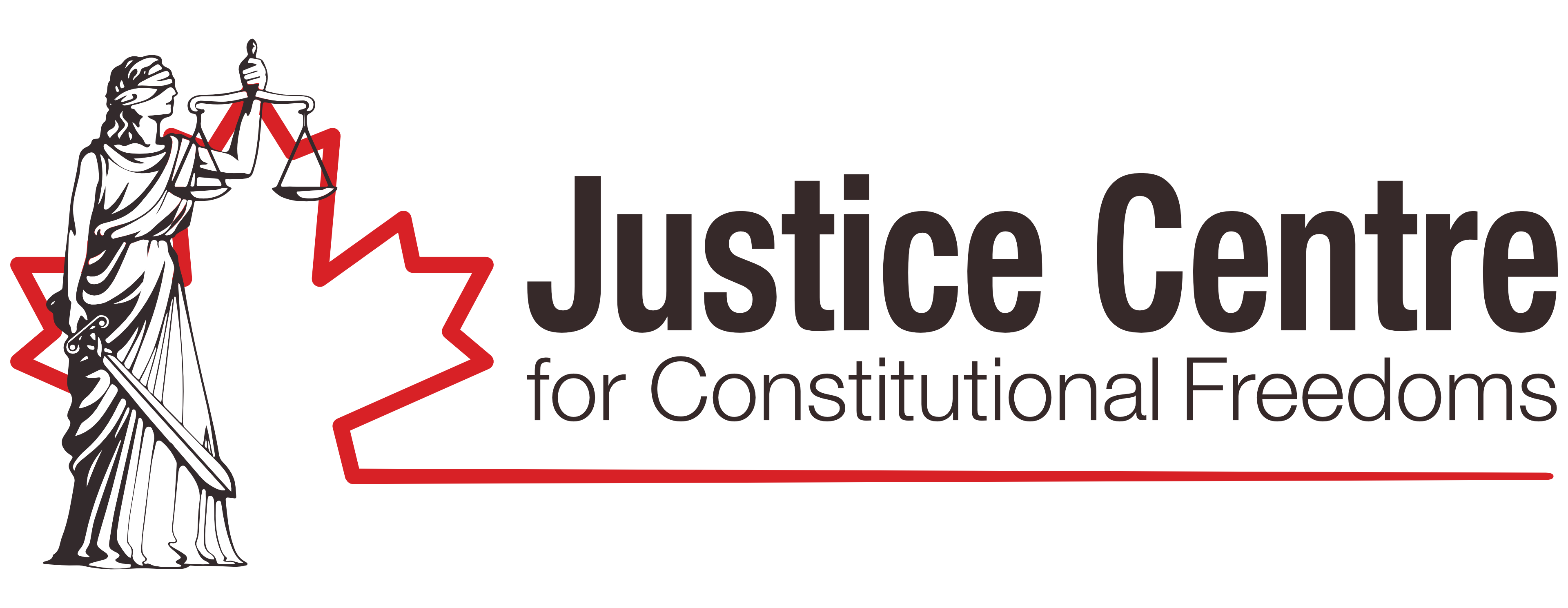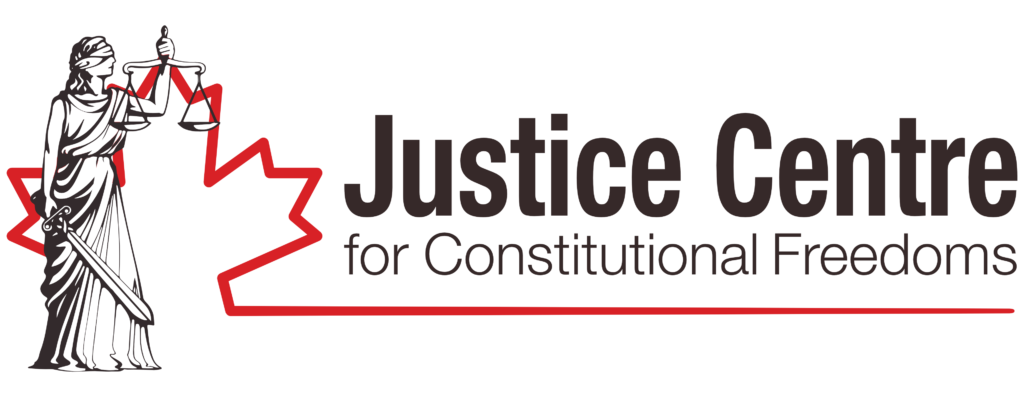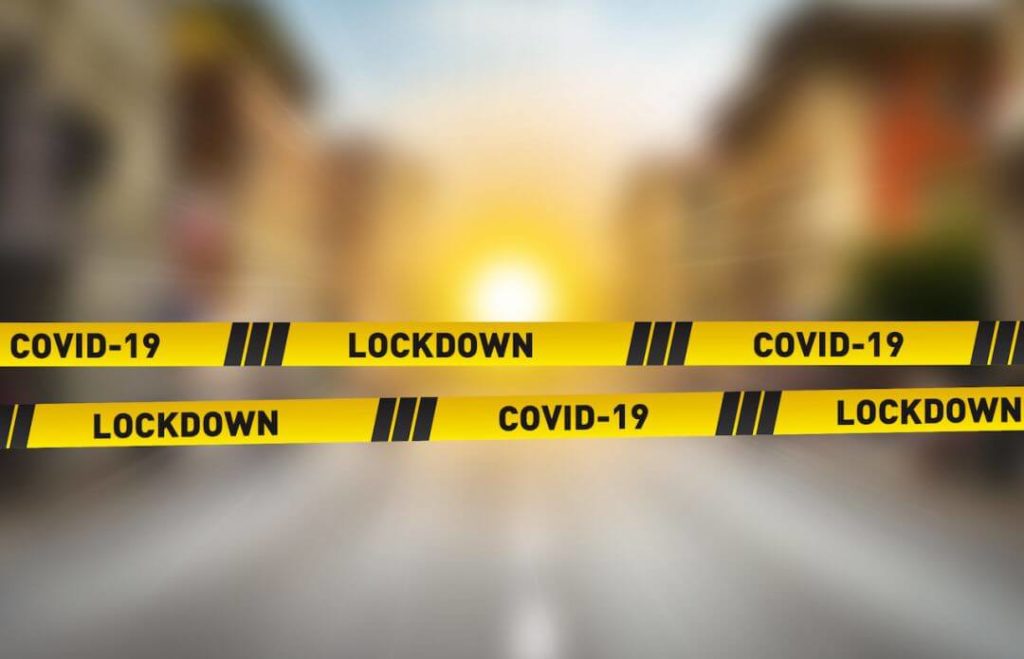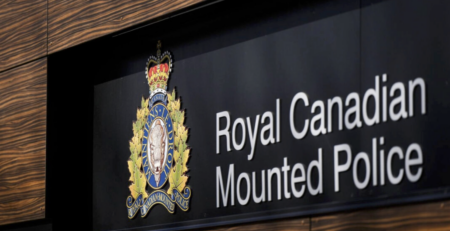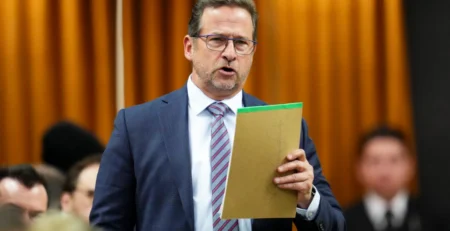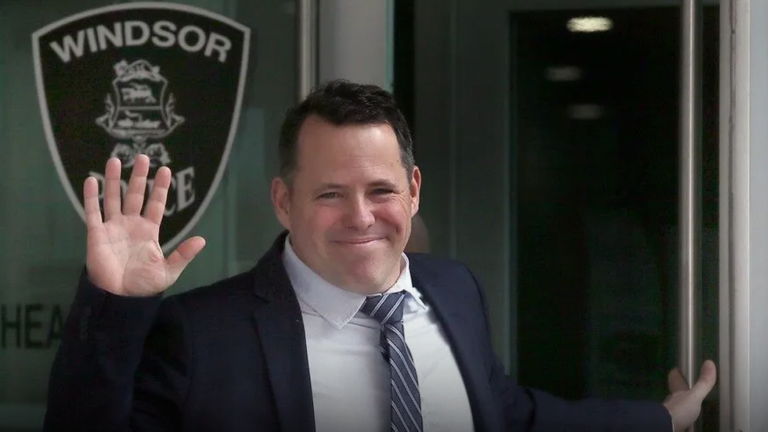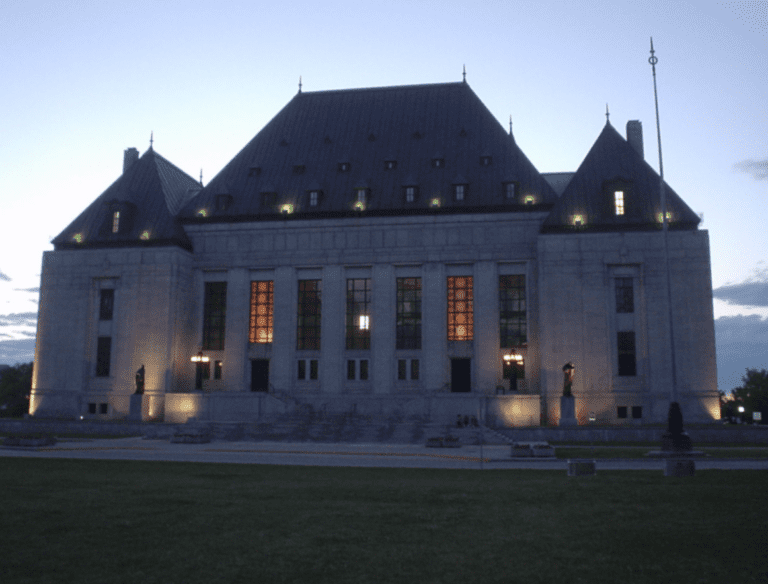Court began at 9:30 AM with Justice Romaine’s ruling on the admissibility of two studies. The main study under review, Madewell #2, the Government of Alberta wanted placed into evidence as a full exhibit and expert report though it was past the date for the submission of evidence. The government’s lawyers attempted to introduce these studies through redirect with applicants’ expert witness Dr. Jay Bhattacharya, and then again by questioning with their own expert witness Dr. Jason Kindrachuk. Justice Romaine had reserved her decision until this morning. The second study, the Rasmussen report, appeared only to be a side issue because the Government had said they only wanted areas marked as an exhibit.
Justice Romaine stated that there are several issues that must be considered when deciding whether studies can be entered into evidence upon questioning of an expert witness. There is a procedure laid out in a precedent R. V Marchand, the first of which is whether the expert is aware of the study when it is introduced. In the transcript she found that Dr.Bhattacharya was not aware of it. She also noted that the Government of Alberta knew the evidence was filed past the deadline for filing and withheld the evidence at the time they received it, knowing full well that this would lead to limitations on its use, “and they are going to have live with that decision.” she said. A few other precedents were cited before Justice Romaine announced her decision to dismiss the application to allow the studies as full exhibits. Regarding testimony by Dr. Bhattacharya and Dr. Kindrachuk on the record about these two studies, she asked that both sides review the transcripts to decide what was to be kept in and what was to be expunged.
This led to some crosstalk and confusion, exacerbated by the video system used for the hearing, as to whether both sides would accept this responsibility. Justice Romaine said she would do it herself if they could not come to an agreement. Eventually, both sides agreed they would go through the transcript and make the decisions.
Mr. Parker complained that Mr. Rath continued to make comments that were unwarranted. Justice Romaine said that it was her understanding that Mr. Grey had spoken to both Mr. Rath and Mr. Parker, asking for collegiality, and she thanked him for his efforts in that regard
The hearing moved on to the cross-examination of Respondent witness Kimberley Simmonds. Dr. Simmonds is lead for analytics and modelling for Alberta’s COVID-19 response at the Alberta’s Emergency Operations Centre. She is an adjunct professor at the University of Calgary Cummings School of Medicine, with a PhD in epidemiology.
Mr. Grey confirmed the witness’ qualifications. Dr. Simmonds stated she was no longer working for the Alberta Government but had taken a job with Ernst & Young. She still taught some classes. Mr. Grey’s questions dealt with Dr. Simmonds disagreements with the applicants’ expert witness Dr. Jay Bhattacharya, his co-authorship of the Great Barrington Declaration and its advocacy of focused protection, as these related to her work creating Covid 19 models for the Alberta government. She believed GBD oversimplified situations and was not useful because the approaches it recommended didn’t adapt to variants as they occurred. Mr. Grey noted that Dr. Anthony Fauci had described the GBD authors as “fringe,” and wondered if Dr. Simmonds agreed with that assessment. She replied that she thought “fringe” was extreme but added that it is quite common for people to “over-exert their expertise.”
Mr. Grey asked her if she was asked to give advice to the government on NPIs, lockdown measures. Dr. Simmonds replied she was asked to provide modelling based on NPIs but didn’t provide recommendations. One of the NPIs she was involved with was contact tracing which she believed was effective. Mr. Grey observed that Dr. Bhattacharya had asserted that contract tracing was not that effective. Dr. Simmonds disagreed with that. She said it was her understanding the phone app was unsuccessful, but the direct phone interviews were. When Mr. Grey told her that one of the reasons for Dr. Bhattacharya’s opinion was because of people’s privacy concerns, she acknowledged that at the beginning of the pandemic, most people would be very helpful in these phone interviews, offering information. “But as time went on, after things became polarized, people became less and less willing to give up information,” she said. So, contact tracing became of little use over time.
Mr. Grey suggested the prevalence of asymptomatic patients and the unreliability of the PCR test decreased the reliability of the contract tracing. She did agree on the problem of asymptomatic cases, but she thought the assumption on the PCR test was a “gross over-simplification.” In terms of a population of 4.5 million, it only amounted to “a rounding error.”
Mr. Grey then brought up the comparison case studies in Dr. Bhattacharya’s report dealing with California and Florida dealing with NPIs and the spread of the virus. Dr. Simmonds thought the use of two studies from the US was not useful because the vast differences in the health systems in the US and Canada. A better comparison, she believed, would be Alberta and Quebec. Mr. Grey said that deaths in nursing homes dropped dramatically in the second wave, and that Dr. Bhattacharya stated that this proved the effectiveness of focused protection. Dr. Simmonds countered that the most effective focused protection was vaccination.
Dr. Simmonds stated that NPIs changed over time because what was learned as the disease spread. For instance, at first everyone thought they were dealing with a respiratory disease, but they eventually discovered it was an inflammatory disease, and so all age groups were affected. Mr. Grey asserted the mortality for those under age 30 in Alberta “is vanishingly low.” Dr. Simmonds agreed.
Mr. Grey then went on to bring up historical comparisons, based on the witness’s statement in her affidavit, “History has shown that infectious diseases are cyclical” and that she went on to assert that in the 1918 smallpox pandemic, herd immunity was achieved through vaccination. Mr. Grey asked her about a previous Alberta pandemic in 1880. Dr. Simmonds was not aware of that, saying she only knew history back to 1905, the year of Alberta’s creation. He bought up the example of an English pandemic in the 1880s which was overcome not with vaccination, but with focused protection measures. Dr. Simmonds was not aware of this event, either. At that point, Mr. Parker objected, noting the witness had already stated she did not know of these events. Mr. Grey withdrew his question.
There was some discussion about models showing a 15% infection rate. Dr. Simmonds declared that this was extremely high and very alarming, and if any other disease, cancer for instance, showed a 15% infection rate, this would “gob-smack” people.
Mr. Grey asked about NPIs and how effective she thought they were. She thought they were effective to some extent. Mr. Grey then referred to hygiene, like handwashing, as an NPI. He asked her if there were any outbreaks among the homeless that she knew of or used in her models. She did not. She said handwashing was ineffective because at first everyone thought the disease spread through large droplets, but that turned out to not be the case.
Mr. Grey moved on to transmission in outdoor settings. Dr. Simmonds noted that the Alberta data showed there was low transmissibilty in these setting, but when asked about outdoor NPIs, she said she was not aware of the measures taken regarding outdoor situations.
Mr. Grey concluded by referring to Dr. Kindrachuk’s testimony from the day before regarding the distinction between correlation and causation and focused on a statement in the witness’s affidavit where she observed that the relaxation in public health measures led to uncontrolled spread of the virus. He asked if she realized this was correlation, not scientific causation. Dr. Simmonds agreed. So Mr. Grey stated it is conceivable that none of the NPIs had any effect. Dr. Simmonds disagreed because of what had been gained through historical experience and biological plausibility.
At 11:20 Justice Romaine called for the morning break.
Court reconvened at 11:35, and Mr. Grey stated he had concluded his questions and turned the questioning over to Mr. Rath.
Mr. Rath began by getting the witness to confirm aspects of her CV, noting that her PhD did not focus on any type of respiratory illness and that she had not prepared an expert report for this hearing. Dr. Simmonds agreed.
He then asked her to confirm that the data she used to prepare her models was from people who had a PCR test, which she did. He then asked her if she was aware that a PCR test could not distinguish between those who had active Covid and those who had recovered, who tested positive 50% of the time. She was. Mr. Rath then suggested that a model with a plus or minus of 50% was an inaccurate model. Dr. Simmonds agreed.
Mr. Rath asked Dr. Simmonds to characterize her work. Would she consider her modelling was a “30,000-foot view” rather than an accurate reflection of what was “happening on the ground”? Dr. Simmonds disagreed and said she actually had the opportunity to review each Covid death to look for comorbidities. Mr. Rath then asked specifically about his clients, whether Dr. Simmonds was aware of what the situation was at Ingram’s gym, or used any data from the gym, or knew of any cases from the gym. She did not.
There were a few other questions on household transmission, some of which were nullified by objections, and then Mr. Rath concluded. At one point, Mr. Parker objected on the grounds of speculation, when Mr. Rath chipped in, “This is about modelling, so it’s all speculation.” The witness burst out laughing, but quickly covered her mouth with both hands to stifle it. Everyone else appeared not to be amused.
Mr. Parker on redirect only had one question about outdoor transmission and it being much lower. He wanted to know when the data was collected. Dr. Simmonds said during the summer of 2020, and she added there were exceptions to the low transmission, notably in situations where people were going in and out of building or eating together.
At 12 noon, the witness was dismissed, and court adjourned for lunch.
Court reconvened at 1:05 PM with swearing of respondent’s witness Deborah Gordon, VP/Chief Health Operations Officer, Alberta Health Services Board.
Mr. Rath started off by asking about her qualifications, confirming with her that she was not a medical doctor, psychologist, psychiatrist, immunologist or virologist. He asked if she had any special training in emergency or crisis management. Ms. Gordon said taken the AB Health internal emergency training. Mr. Rath asked whether there was any training for provincial scale emergencies. She replied she had been the incident commander in many Alberta emergencies. Mr. Rath characterized these as localized emergencies, and the witness agreed, adding that she had been lead in forest fire and flood emergencies. So Mr. Rath rephrased it to “no provincial scale pandemics or epidemics.” Ms. Gordon said there had been no pandemic in Alberta in her lifetime. Mr. Rath asked about the 2009 H1N1 outbreak. Ms. Gordon said she was working as a chief operating officer at a hospital during the H1N1 outbreak and had emergency training there.
Mr. Rath then followed that lead and asked about if her hospital was at capacity during H1N1. She said they were at increased capacity but had no statistics. Mr. Rath tried to get her to generalize, was her hospital at or near capacity? She replied that she couldn’t remember. So, Mr. Rath tried to get her to agree that from time to time, in Alberta, respiratory outbreaks happen where hospital capacity is strained. Ms. Gordon said yes, but those were nothing like what they had experienced with Covid, which was far more serious.
Mr. Rath asked about a WHO model included in her affidavit and about its influence on any planning that went on for the pandemic. Ms. Gordon replied it was only one of many “inputs” they relied on in a situation with many unknowns at the time.
Mr. Rath asked if she knew how much additional monies were added to the public health budget from March, 2020 to June, 2021, and she estimated it to be between 1 and 2 billion dollars. Mr. Rath then went into particulars, asking how many extra nurses were hired. Ms. Gordon said at a minimum 1,000. How many additional doctors? She didn’t know. Respiratory therapists? Didn’t know.
Mr. Rath then quoted from the witness’s affidavit about clearing additional spaces in hospitals, and transferring patients elsewhere, including to long-term care facilities. Mr. Rath asked Ms. Gordon to confirm that Alberta didn’t follow the practice of New York, where they transferred Covid positive patients from hospitals to long term care homes. Ms. Gordon didn’t confirm it and said that in Alberta the health care system was very careful when they did return people to their long-term care homes, if they did test positive for Covid, they were isolated. She stated there were numerous outbreaks in care homes, and patients were cared for in these homes as long as they could be given care, and if not, they were transferred to hospital. Mr. Rath asked if there was any consideration given to the fact that keeping Covid infected people in homes would create more infections. Ms. Gordon said they had “very strong” procedures in place to deal with this.
Mr. Rath then asked if these strong procedures were in place from the beginning, or did they improve during the course of the pandemic. Ms. Gordon replied that they were very strong at the beginning and continually improved. So Mr. Rath asked if the province was aware from the beginning that long-term care facilities would be a problem. Ms. Gordon then said they were aware generally about vulnerable populations. Mr. Rath asked her if she was aware that most of the deaths in Alberta were in long-term care homes. Ms. Gordon said she couldn’t give any death statistics, because this is not her area of responsibility. Mr. Rath pressed the point, and asked from the position of a manager, was she aware of increased deaths and infections in long term care. Ms. Gordon then went on to state that there were outbreaks in many care settings and in workplaces and in schools. Yes, she said she was aware that there were outbreaks in care settings, but she could not “say they were the hardest hit.” Mr. Rath continued to press, trying to get the witness to agree that there were virtually no deaths in the age group under 30, and that the most affected were in long term care homes. She would not agree. While she acknowledged that age is a risk factor, there are people across all age groups dying of Covid. Mr. Rath kept going, asking her if she would agree that the death statistics in the under 30 age group were insignificant compared to the over 70 group. Ms. Gordon replied that no death is insignificant. Mr. Rath tried one more time to rephrase the question, when Mr. Parker objected, citing the fact that Ms. Gordon had already indicated she is not the one who can give death stats. Mr. Rath replied that this was a senior manager in Alberta Health, with involvement in NPIs etc. For her to not have an idea of how many deaths occurred in long term care homes “is frankly, unbelievable.”
Justice Romaine upheld the objection because Ms. Gordon said that death numbers are not her responsibility.
Mr. Rath asked about transfers from long term care to hospitals. Ms. Gordon said that actually very few were transferred and most received care at their homes. Mr. Rath asked if it was because they were simply allowed to die there. Ms. Gordon said that most could be cared for in the homes and some had end of life directives stipulating where they wished to die.
So Mr. Rath asked about ICU patients, and what age group were most of these coming from. Ms. Gordon stated they were from all age groups, but the plus 60 years age group was “prevalent.” And fewer children, “up until recently.”
Mr. Rath asked about her decision to reduce ICU capacity in June of 2020. Ms. Gordon said it was good decision to give everyone a break. They then went through the fluctuating number of ICU and regular beds through waves 1-3. Ms. Gordon said through wave 1, they only had info about what was happening elsewhere–Wuhan, Italy, etc.–so the decision was made to prepare for a large scale disaster. Ms. Gordon said, when that didn’t happen, they decided to scale down to allow for a break for healthcare workers. The second wave they had ramp up quickly, but they had some experience in looking after Covid patients. For the 2nd and 3rd waves they had 425 ICU beds open, and for other beds, there were plans for over 2,200 additional beds, but they only had to open a little under 2,000. Normally, the system had 170 some ICU beds.
There were some more questions about ratios of management to staff and management to doctors, with more objections about relevance, etc., after which Mr. Rath turned the questioning over to his colleague Mr. Grey.
Mr. Grey referred to Ms. Gordon’s testimony where she had stated she could not comment on death rates regarding age. He then brought up an exhibit, a government report dated May 2020, that was attached to Ms. Gordon’s affidavit. Ms. Gordon noted that it was a government document, and she worked for Alberta Health Service. But Mr. Grey reminded her that this was part of her evidence. Mr. Grey then showed her line that said the average age of Covid victim in Alberta was 82 years. Then another line about average I hospitalization age was 60 years. Then another stating the average age for non-hospitalization was 40 years. He said it is very obvious that the number of deaths increases with age. He asked if she agreed. She did and said she had mentioned before that age was a risk factor. Then he scrolled down to the next page which showed a graph with the number of Covid victims and their age group, and here he began what might be described as courtroom verbal water torture. Mr. Grey read out each line and had Ms. Gordon acknowledge it. “Under one year, zero deaths. Right?” She agreed. “One to four, zero deaths. Correct?” Ms. Gordon, “Yes.” “Five to nine, zero deaths. Correct?” “Yes.” And so on, straight off the page; 9 to 19, zero. 20 to 29, 1 death; 30 to 39, 1 death; 40 to 49, 1 death. 50 to 69, 2 deaths. 60 to 69 years, 10 deaths. 70 to 79, 23 deaths. “80 plus years, 83 deaths. Correct?” Ms. Gordon, “Yes.” Mr. Grey, “Those are all my questions about this graph.”
Mr. Grey then asked the witness whether she had seen any formal plan for the pandemic that would guide her specifically. Ms. Gordon said because Alberta never had a pandemic before, there was “no specific plan.” She said they did refer back to the emergency management plan and documents from the H1N1 outbreak. Mr. Grey took issue with her statement that Alberta had never had a pandemic, referring back to the Hong Kong flu in 1969 and the Spanish flu in 1918. This began a series of objections and rebuttals about the nature of evidence and whether Mr. Grey was actually giving testimony. Mr. Grey concluded this by clarifying his question and asking the witness to clarify her answer. That ended that.
After this, Mr. Grey went through a history of the Alberta pandemic, including all the restrictions, asking about the timing about certain incident. Ms. Gordon couldn’t recall specific dates but recalled incidents generally. Mr. Grey’s point was that there was shifting guidance from the government throughout the pandemic, and it seemed what everyone was doing was “responding what the virus was doing.” Ms. Gordon said it was her “understanding of the plan” that what they were doing was ensuring they had capacity in the system to respond. Mr. Grey then asked about ventilators, since acquiring enough of these was one step. Ms. Gordon replied this was early in the pandemic. Mr. Grey observed that later on doctors found out the use of the ventilators was overly aggressive, resulting in 90% of patients put on ventilators dying. Ms. Gordon said this was not how she understood it. Mr. Grey said this was from a New York study, but they had something similar in Quebec. Mr. Grey said this is an example of working from behind and no having a plan. Ms. Gordon disagreed, saying that early on they sought the ventilators on the understanding that this was a severe respiratory illness.
Mr. Grey asked whether the witness was aware of a 2014 pandemic plan. Ms. Gordon said she was aware of it, but it was a Alberta government plan, and she worked for Alberta Health Services. She was not familiar with it, other than to say she knew that colleagues in the Alberta government used portion of that plan in the response. Mr. Grey then asked if she was aware of any specific plan in Alberta Health Services to deal the pandemic. Ms. Gordon answered they did prepare a plan, before the pandemic and as it was ongoing. Mr. Grey then asked if she had seen any of these plans written down. She had seen the plan to deal with H1N1. Mr. Grey asked if these were distributed before the pandemic arrived, or were they created after the virus arrived. She said she was referring to plans dealing with prior illnesses which were used as Alberta Health Services created plans to deal with the pandemic. Mr. Grey observed he hadn’t seen any of these plans attached to Ms. Gordon’s affidavit, so she must have thought these weren’t relevant to these proceedings.
Mr. Parker objected that this was an improper question on the grounds that the witness can’t speak to relevance. Mr. Grey withdrew the question and rephrased it. He asked if any of the plans Ms. Gordon spoke of were part of her evidence. She said they weren’t.
Mr. Grey concluded his questioning. Mr. Parker requested a minute to review his notes, and afterwards concluded he had no questions.
Justice Romaine observed this was last witness until April.
Court adjourned at 2:10 PM. To reconvene in April (date not specified in court).
